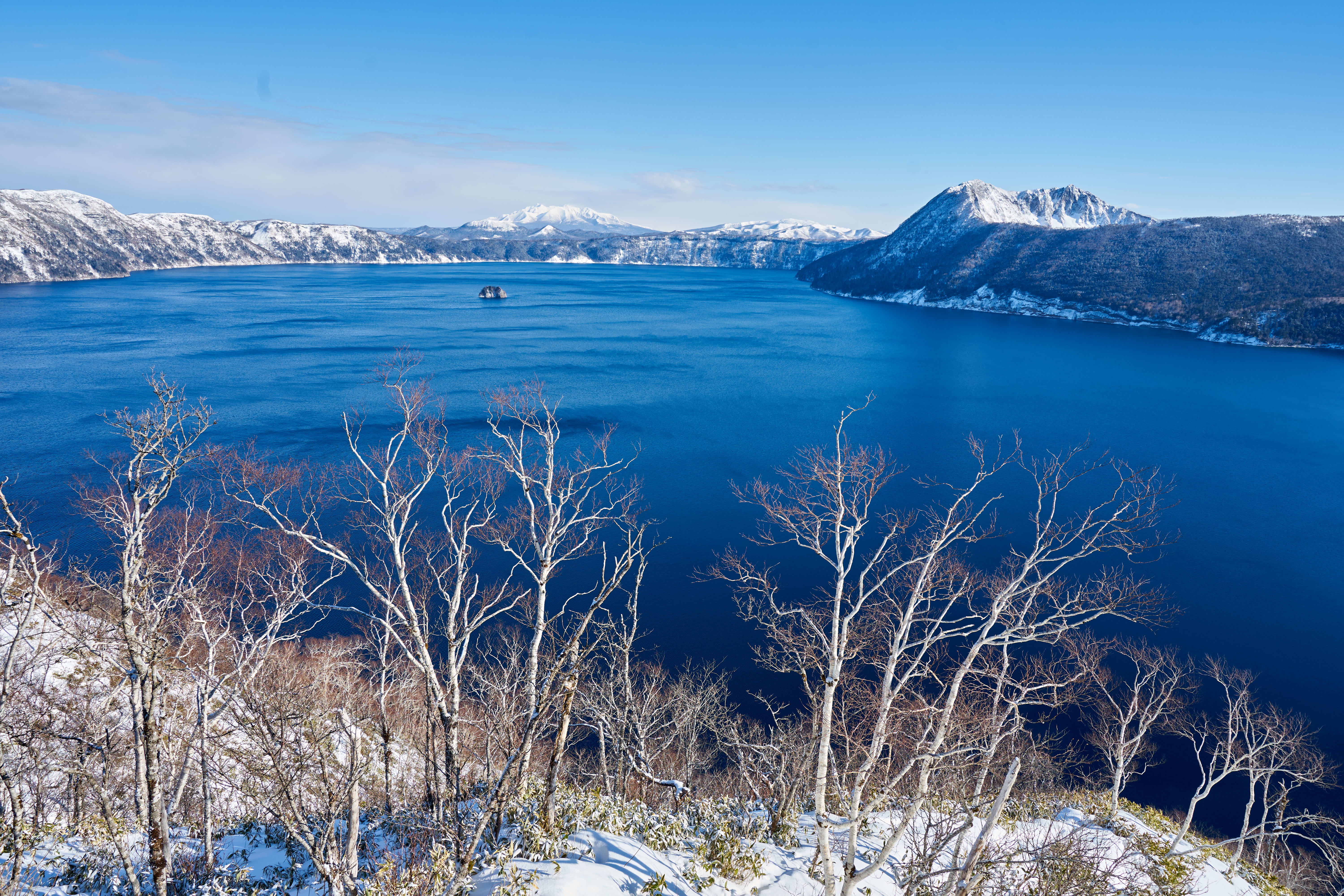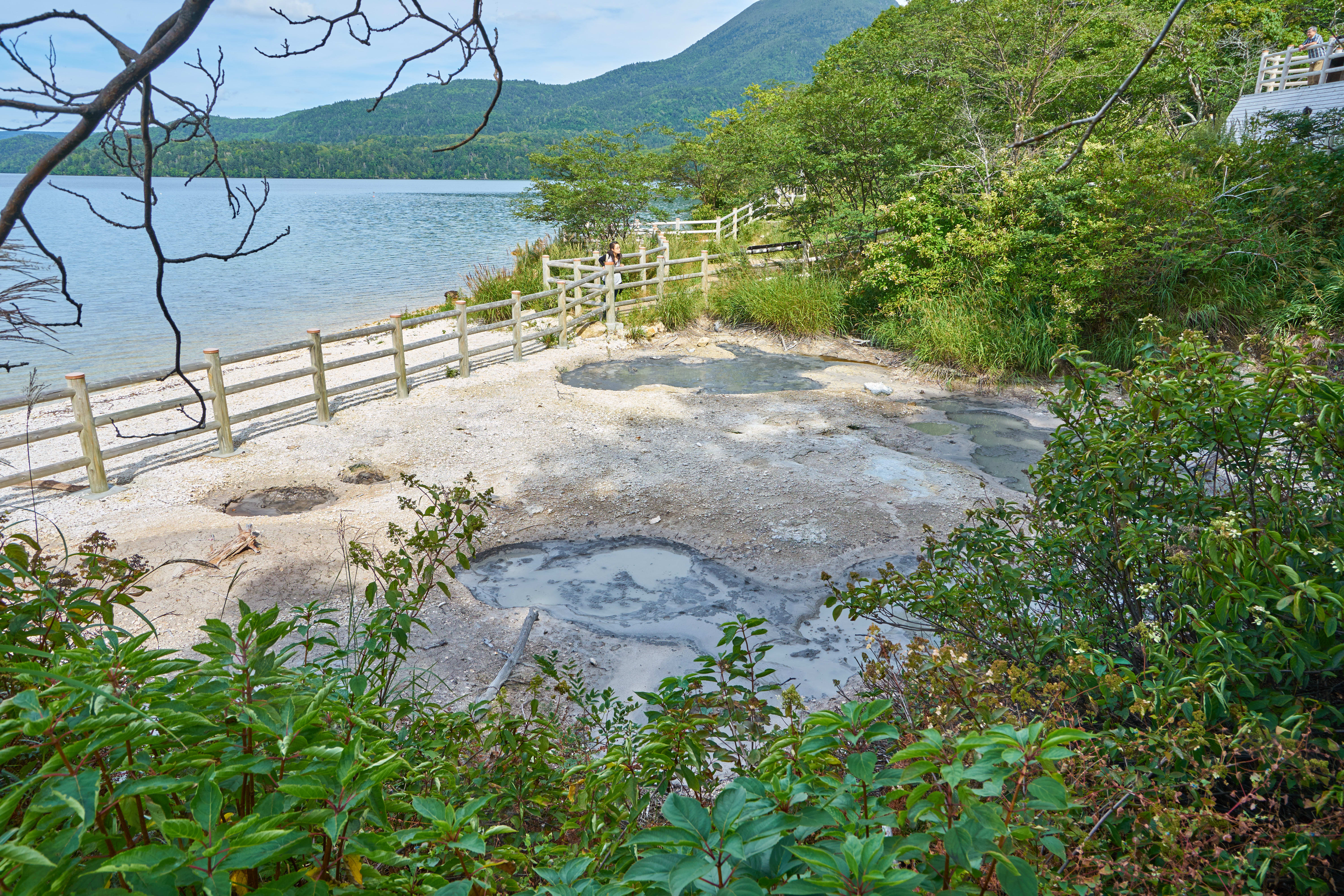Explore a landscape sculpted by volcanic activity
A land of volcanoes, lakes, and forests, Akan-Mashu National Park is rich with stories from ancient times. Located in Eastern Hokkaido, Japan’s northernmost island prefecture, volcanic eruptions approximately 150,000 years ago created Akan Caldera, resulting in this region’s topography. Over the course of thousands of years, constant volcanic activity has altered the land, shaping mountain ranges, calderas (large volcanic craters), and lakes. Today, the area’s pristine environment is home to several unique ecosystems and exploring the vast national park reveals fascinating interconnections between volcanoes, waterways, flora, and fauna.

Akan-Mashu National Park is 91,413 hectares in size and is divided into two main sections: Akan to the west and Mashu to the east. Lake Akan is in the heart of the western area, and is famous for being the natural habitat of a rare green algae called Marimo. They can grow into round balls as large as 30 cm in diameter, and Lake Akan is the only place in the world where spherical Marimo exist. These organisms thrive in Lake Akan due to waves that help to create their unique shape, sunlight that filters through the lake’s clear water, and saline spring water that seeps from the lakebed. The Marimo Exhibition Center and the Akankohan Eco-museum Center give visitors a chance to see this fascinating organism up close.
The Bubbling Mud Pools of Akan
The Akan area usually receives its first dusting of snow in October and up to 1m of snowfall can pile up each winter, except in areas where there are bokke. Bokke are boiling mud pools that erupt continuously from underground.
These bubbling pools can be seen, heard, and smelled along the shore as well as in the mountains south of the lake. The ground near bokke remains warm year-round so Japanese deer gather here in search of food, and the chirping sounds of crickets can even be heard in an otherwise snowy landscape.

Lake Kussharo and Lake Mashu—Crater Lakes of a Grand Scale
With Lake Kussharo and Lake Mashu at its center, the Mashu side of the national park has an equally diverse natural environment. Hundreds of whooper swans migrate from Siberia to Lake Kussharo, one of the largest caldera lakes in the world, for the winter. Visitors can bathe in open-air hot springs and watch these beautiful swans from just meters away.
Both Lake Kussharo and Lake Mashu exhibit a rare natural phenomenon that occurs early in the morning during the warmer months of the year. Referred to as a “sea of clouds,” coastal fog that moves inland becomes trapped in low lying areas of these two enormous calderas. Fog hovers above the lakes as warmer air above the water traps colder air beneath. This can be viewed from several observation decks located around the perimeter of the two lakes.

Smoldering Mt. Io
Mt. Io (Sulfur Mountain) is an active volcano in the center of the Mashu side of the park. The sulfur of this rocky mountain was mined extensively in the 19th century. Around the volcano, hot steam escapes from 1,500 various-sized vents or “fumaroles.” The odor of sulfur permeates the air and the bright yellow, sulfurous vents make for an otherworldly sight. The volcanic gases affect the acidity of the soil and only the hardiest plants can thrive here. Japanese stone pine and marsh Labrador tea, two plants that can survive in this type of harsh environment, cover the foot of Mt. Io.

The Indigenous Ainu People
The Akan-Mashu area was designated a national park in 1934. The Ainu people have lived on this land from ancient times. The indigenous Ainu people of Japan coexist peacefully with nature as fishermen, hunters, and plant gatherers. They believe that all living things were spirits sent to Earth with a purpose. For example, brown bears are worshipped as reincarnated mountain gods that give people meat for food and fur for clothing. Although the remaining Ainu population no longer practices their traditional lifestyle, their customs and culture are kept alive at places such as the Akanko Ainu Kotan village and Kussharo Kotan Ainu Folklore Museum.
Activities and the Seasons
There are many outdoor activities available throughout the year at the Akan-Mashu National. In summer, many visitors go canoeing and camping, and this is also the best season for fishing. In autumn, hiking through the vibrantly-colored forests is popular. Winter’s sub-zero temperatures cause the lake to freeze and allow visitors to try ice fishing for smelt, or snowshoeing. Spring comes later to Hokkaido than the rest of Japan; warmer temperatures usually return around May, when the landscape explodes into a bouquet of colorful flowers including the yellow Meakan-kinbai (Potentilla miyabei Makino).
One of the traditional homelands of the Ainu, Akan-Mashu National Park is full of wildlife and awe-inspiring natural wonders. It is a hidden treasure of Japan waiting to be discovered and explored.


















